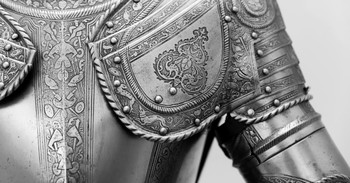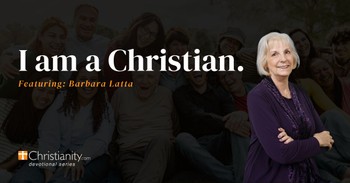Nestorius was consecrated bishop of Constantinople on this date April 10th, 428. His elevation to this influential position had profound repercussions for the church. A firm opponent of the Arian heresy, he was accused of falling into a contrary error.
Nestorianism Quick Facts
Nestorianism (5th Century)
This heresy taught Mary only gave birth to Jesus’ human nature. The founder of the heresy, Nestorius, did not even want Mary to be called “Mother of God” but instead wanted her to be called “Mother of Christ.” In essence, the heresy maintained Jesus was really two separate persons, and only the human Jesus was in Mary’s womb. If that was true, then Jesus was not God incarnate while in the womb.
Leader(s) in the Heresy: Nestorius of Antioch (Bishop of Constantinople in 428AD)
Corrector(s) of the Heresy: The Council of Ephesus in 431AD
Arians taught that Christ was a created being. To refute this and other points, Nestorius argued that the Godhead joined with the human rather as if a man entered a tent or put on clothes. Instead of depicting Christ as one unified person, Nestorius saw him as a conjunction of two natures so distinct as to be different persons who had merged.
Nestorius refused to call Mary the "Mother of God." Her baby was very human, he said. Jesus' human acts and sufferings were of his human nature, not his Godhead. To say Mary was Mother of God was to say God had once been a few hours old. "God is not a baby two or three months old," he argued.
He never denied that Christ was divine. On the contrary, it was to protect Christ's divinity that he argued as he did, lest it be lost in worship of the human child. The divine nature could not be born of a woman. Nestorius' refusal to use the term "theotokus," Mother of God, led to a big argument. He pointed out that the apostles and early church fathers never employed the word. But he could not resolve the issue so as to bring into focus the Jesus we know from scripture who is completely and truly both God and man.
The Heresy of Nestorianism
The Nestorian teaching originated in the school of Antioch, and was taught by Diodorus and by Theodore, bishop of Mopsuestia. What was the heresy? These men did not accept the Orthodox belief that the human and divine natures of Christ were united from the instant of the Word's conception in the womb of Mary. A symbol of this controversy was the acceptance or non-acceptance of the title, "Theotokos," or "God Bearer," translated in the West to "Mother of God," for the Virgin Mary. Of course that did not mean that Mary was the Mother of the eternal and indivisible Trinity, but that she was the mother, not just of the man Christ, but of the complete God-man. It was and remains in the Orthodox world as a title intended to emphasize the union of the two natures. But the term "God-bearer" is also used for saints in the Orthodox church, such as the "God-bearing Fathers," meaning those who lived Christ-like lives.
Cyril, the patriarch of Alexandria, condemned Nestorius' works by issuing twelve anathemas against him. Nestorius responded in kind. The two men were harsh individuals and fierce antagonists. There was no chance of reconciliation. Emperor Theodosius II called a council at Ephesus to settle the question. Working quickly, Cyril and his allies deposed Nestorius before his Syrian supporters could reach the council site. Rome backed Cyril's move and Nestorius was stripped of his position and exiled. Theologians who study Nestorius' writings today say that his opinions were misrepresented and probably were not heretical.
Nestorius verbally and in writing refused to accept the title Theotokos (God-bearer) for Mary, the mother of Jesus. In doing so, the rest of the church felt he he was proclaiming his refusal to accept the two natures of Christ. He was embittered by the refusal of the "other side" to agree with his teaching.
It has been pointed out many times that there was competition -- sometimes fierce -- between Alexandria and Constantinople. Alexandria wanted a Patriarch who would understand the needs of the African Church and listen to her theologians. They were very unhappy with Nestorius.
The Third Ecumenical Council at Ephesus
The Third Ecumenical Council opened on this day, the 22nd of June in 431 in the city of Ephesus in Asia Minor. It was called to resolve a dogmatic controversy that had divided the church into two main camps. Theodore of Mopsuestia, supported by Nestorius, Archbishop of Constantinople, held to what has become known as the Nestorian heresy. The opposite camp was represented by Cyril, Archbishop of Alexandria, the pope, and emperor Theodosius the Younger. Theodosius, who called the Council, believed that the strength of his empire depended upon true worship of God without the intermingling of falsehood. Two hundred fathers attended.
The Council opened under Cyril, a thoroughly unsympathetic figure, and a master of political intrigue. He had the agreement of Pope Celestine (who was deceased by the time the council began). Cyril was no believer in fair play. He opened the proceedings before Nestorius and his supporters arrived. For this and other actions, historians criticize Cyril of high-handedness; and of serving as both accuser and judge. But Cyril seems to have truly believed Nestorius was teaching heresy. In response he adopted a position of his own which was close to the monophysite heresy.
A careful reading of Nestorius has led some scholars to say he was no heretic. Certainly he set out to ensure that the manhood of Christ was not lost in his deity, and eventually, grudgingly allowed the term "Theotokos" to be used as long as it was understood Mary did not thereby become a deity. Whatever the faults of Cyril's approach, he and his camp believed that Nestorianism attacked a basic dogma of the Church -- the very nature of Christ himself. They reacted fiercely, in the strongest way they knew how.
Nestorius' followers did not go down without a fight. In regions controlled by Persia they formed their own church. At the beginning, it was a strong body which evangelized as far East as China. Nestorian churches appeared in Arabia, India, Tibet, Malabar, Turkostan and Cyprus. Many exist to this day, especially in Iraq, although the level of spirituality is often low. Some units reunited with the Roman Catholic church around the sixteenth century.
In part because of the Nestorian controversy, the church created a formula to describe Christ's person at the Council of Chalcedon in 433. The assembled bishops declared Christ was two natures in one person. "We all with one voice confess our Lord Jesus Christ one and the same Son, at once complete in manhood, truly God and truly man, consisting of a reasonable soul and body; of one substance with the Father as regards his Godhead, of one substance with us as regards his manhood, like us in all things, apart from sin..."
(excerpts from Painful Council Met at Ephesus, also by Dan Graves)
Photo Credit: ©iStock/Getty Images Plus/artisteer
Bibliography:
- Aland, Kurt. Saints and Sinners; men and ideas in the early church. Philadelphia: Fortress Press, 1970.
- Bray, Gerald. Creeds, Councils & Christ. Leicester, England; Downers Grove, Illinois: InterVarsity Press, 1984.
- Chapman, John. "Nestorius and Nestorianism" and "Cyril of Alexandria, St." The Catholic Encyclopedia. New York: Robert Appleton, 1914.
- Cyril, Bishop of Alexandria. "Anathamas" and "Exposition." Documents of the Christian Church. Selected and Edited by Henry Bettenson. London: Oxford University Press, 1967, 1963.
- Eerdman's Handbook to the History of Christianity. Editor Tim Dowley. Berkhamsted, Herts, England: Lion Publishing, 1977.
- "Nestorius." The Oxford Dictionary of the Christian Church. Edited by F. L. Cross and E. A. Livingstone. Oxford, 1997.
- Prestige, G. L. Fathers and Heretics: six studies in dogmatic faith with prologue and epilogue. London: S.P.C.K., 1958.



